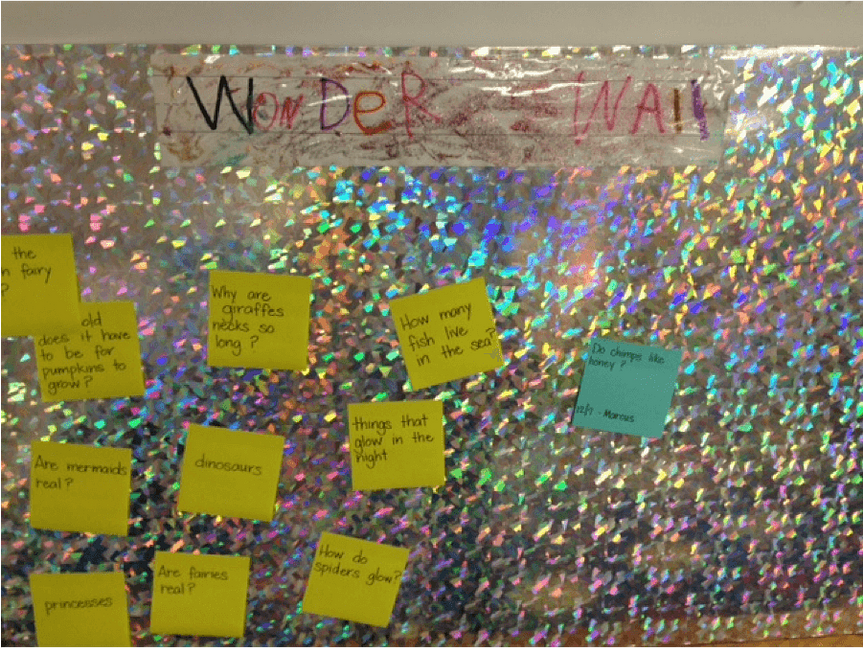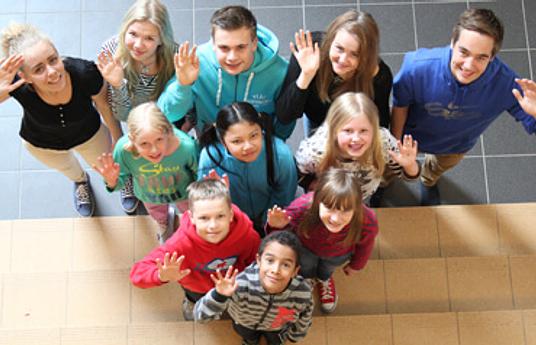What we do?
Teachers in every classroom, from when they leant how to read and write, have freed up spaces on their walls or sometimes doors. Above these spaces, they wrote in big letters: Wonderwall. Underneath this space lies a pile of post-its and are pens available.
Whenever they want, children can take a post-it and write down a question they wonder about. It can be about anything. Then they stick it on the Wonderwall.
When a teacher has a few minutes left (or just wants to address a few wonders - because they will be good!) she can pick a post-it from the wall and read the question to the class. Then, the class can debate about possible answers, the teacher can philosophize with the class about the answers and trigger them by asking more.
After discussing, maybe a child will take it upon itself to go and do research and find it out, maybe a group of children would like to work on a question. The most beautiful things happen, especially when the teacher starts a dialogue with the class (instead of giving the answer).
Another way of using the Wonderwall is when starting a project. For example the project is about ancient Egypt. Then the teacher can ask the children to put up things they wonder about ancient Egypt. The teacher can use the questions to build the project and to engage the children more when exploring this topic. If you use the Wonderwall this way, use it for a short while and you might want to divide it into two sections, one appointed to ancient Egypt, the other to the normal use.
Why we do it?
For years teachers decided what the content would be in the class. Using the Wonderwall gives children a voice, in a subtle, playful way. When starting a project, it gives children influence in the topics that will be addressed.
For teachers it is great to know what the questions in the minds of the children are. What keeps their minds busy? What do the wonder about? The Wonderwall makes it easy for kids to express this, just put up a note.
Children are stimulated to ask questions, instead of listening. They are challenged to be critical of their environment and not to take things for granted (Why is the sky blue?).
For teachers, this is easy to adapt to. It does not take much work and the yield is extraordinary.


